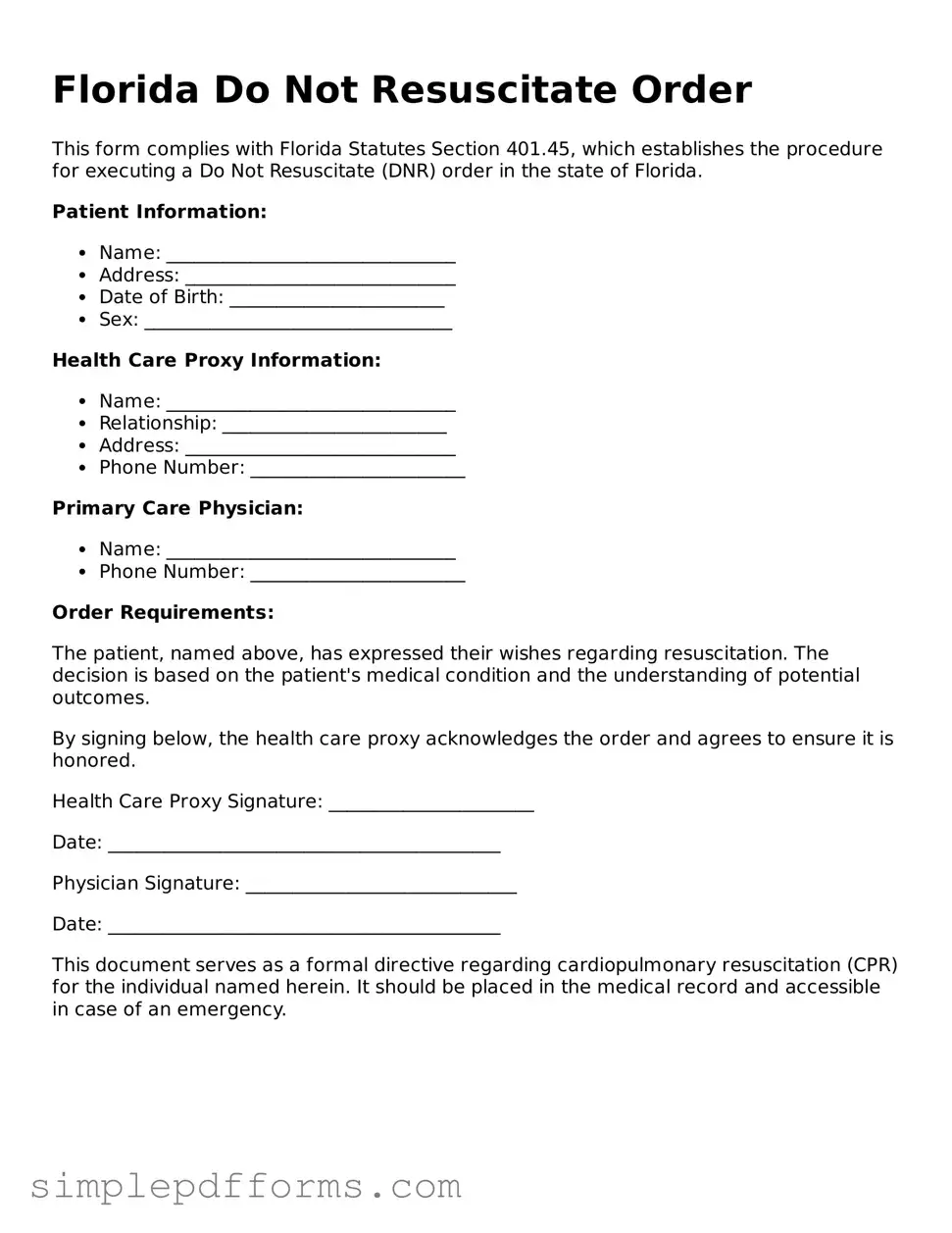Florida Do Not Resuscitate Order
This form complies with Florida Statutes Section 401.45, which establishes the procedure for executing a Do Not Resuscitate (DNR) order in the state of Florida.
Patient Information:
- Name: _______________________________
- Address: _____________________________
- Date of Birth: _______________________
- Sex: _________________________________
Health Care Proxy Information:
- Name: _______________________________
- Relationship: ________________________
- Address: _____________________________
- Phone Number: _______________________
Primary Care Physician:
- Name: _______________________________
- Phone Number: _______________________
Order Requirements:
The patient, named above, has expressed their wishes regarding resuscitation. The decision is based on the patient's medical condition and the understanding of potential outcomes.
By signing below, the health care proxy acknowledges the order and agrees to ensure it is honored.
Health Care Proxy Signature: ______________________
Date: __________________________________________
Physician Signature: _____________________________
Date: __________________________________________
This document serves as a formal directive regarding cardiopulmonary resuscitation (CPR) for the individual named herein. It should be placed in the medical record and accessible in case of an emergency.
